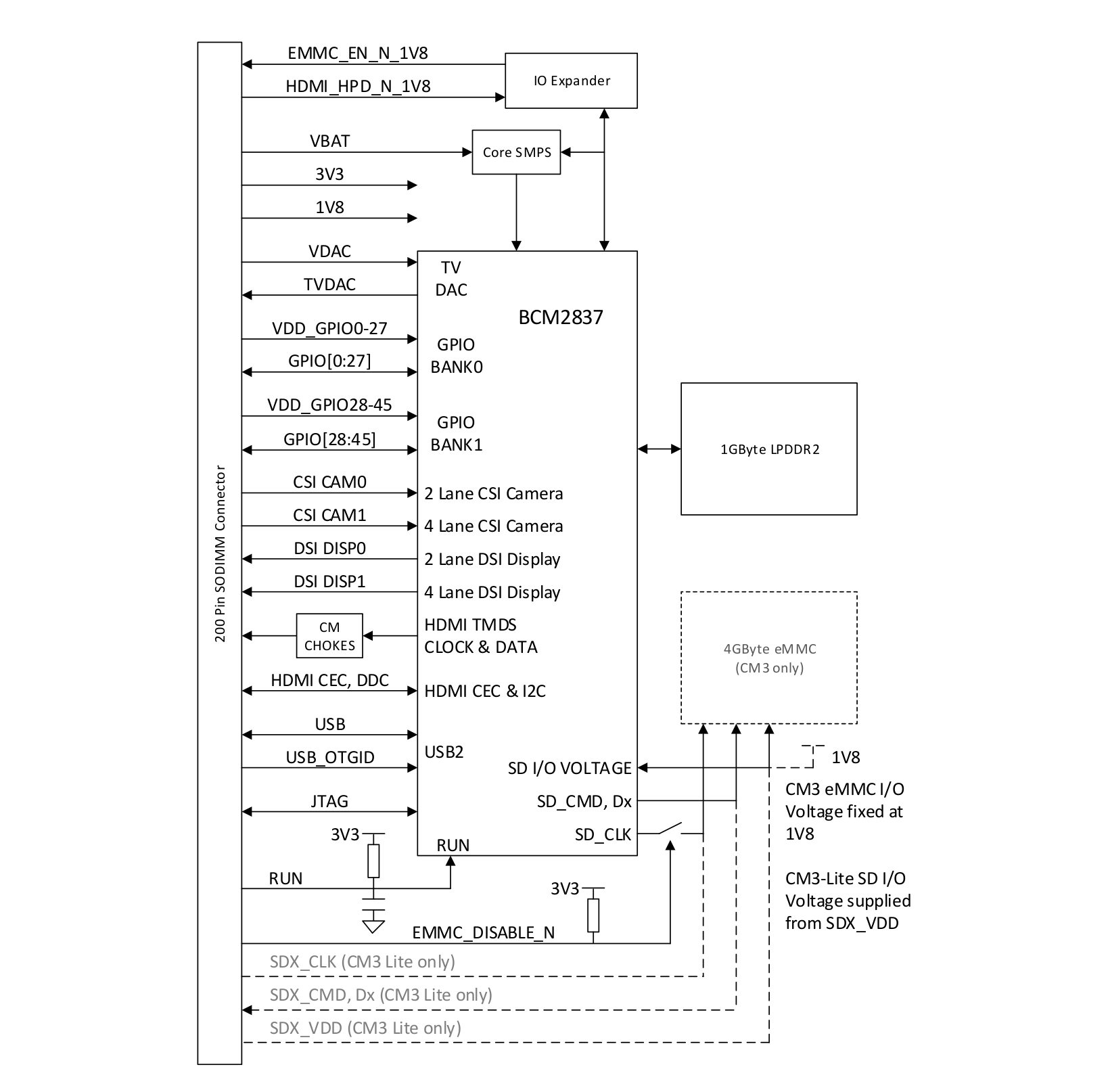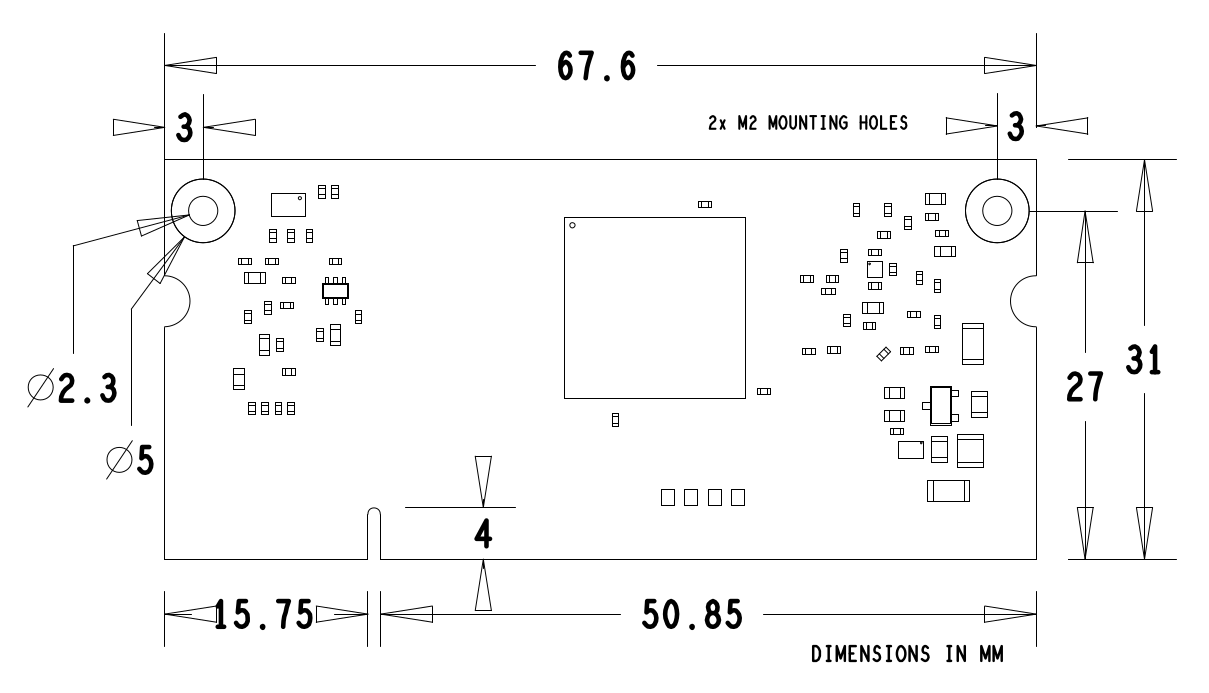Last week NEC announced they were going to use Raspberry Pi Compute 3 Module in some of their presentation and digital signage displays. This led to a longish discussion in the blog post, during which one commenter left a link to Raspberry Pi Compute Module 3 datasheet, so let’s have a look.

There will actually be two version of the Broadcom BCM2837 based Compute Module with CM3 with a 4GB eMMC, and CM3 Lite (CM3L) without eMMC, but SD card signal are available to the baseboard. Apart from storage differences, both modules shared the same specifications:
- SoC – Broadcom BCM2837 quad core Cortex A53 processor @ 1.2 GHz with Videocore IV GPU
- System Memory – 1GB LPDDR2
- Storage
- CM3 Lite – SD card signals through SO-DIMM connector
- CM3 – 4GB eMMC flash
- 200-pin edge connector with:
- 48x GPIO
- 2x I2C, 2x SPI, 2x UART
- 2x SD/SDIO, 1x NAND interface (SMI)
- 1x HDMI 1.3a
- 1x USB 2.0 HOST/OTG
- 1x DPI (Parallel RGB Display)
- 1x 4-lane CSI Camera Interface (up to 1Gbps per lane), 1x 2-lane CSI Camera Interface (up to 1Gbps per lane)
- 1x 4-lane DSI Display Interface (up to 1Gbps per lane), 1x 2-lane DSI Display Interface (up to 1Gbps per lane)
- Power Supply – VBAT (2.5V to 5.0V) for BCM2837 processor core, 3.3V for PHYs, UI and eMMC flash, 1.8V for PHYs, IO, and SDRAM, VDAC (2.8V typ.) for video composite DAC, GPIO0-27_VREF & GPIO28-45_VREF (1.8 to 3.3V) for the two GPIO banks.
- Dimensions – 67.6 x 31 mm; compliant with JEDEC MO-224 mechanical specification used in DDR2 SO-DIMM memory module
- Temperature Range – -25 to +80 degrees Celsius
Compute Module 3 and 3 Lite are basically mechanically & electrically compatible with the original Raspberry Pi Compute Module (CM1), so if you have an existing design based CM1, CM3 should be a drop-in replacement, bearing in mind the following differences explained in the datasheet:
Apart from the CPU upgrade and increase in RAM the other significant hardware differences to be aware of are that CM3 has grown from 30mm to 31mm in height, the VBAT supply can now draw significantly more power under heavy CPU load, and the HDMI HPD N 1V8 (GPIO46 1V8 on CM1) and EMMC EN N 1V8 (GPIO47 1V8 on CM1) are now driven from an IO expander rather than the processor. If a designer of a CM1 product has a suitably specified VBAT, can accommodate the extra 1mm module height increase and has followed the design rules with respect to GPIO46 1V8 and GPIO47 1V8 then a CM3 should work fine in a board designed for a CM1.
The datasheet also includes detailed mechanical and electrical specifications necessary to build a baseboard for the Compute Module.

It should also be enough for people to design a compatible SoM based another processor, but so far I’m not aware of anybody having done so with Compute Module 1.
Raspberry Pi Trading guarantees availability of CM1, CM3 and CM3 Lite until at least January 2023.

Jean-Luc started CNX Software in 2010 as a part-time endeavor, before quitting his job as a software engineering manager, and starting to write daily news, and reviews full time later in 2011.
Support CNX Software! Donate via cryptocurrencies, become a Patron on Patreon, or purchase goods on Amazon or Aliexpress




